Michael Mercer
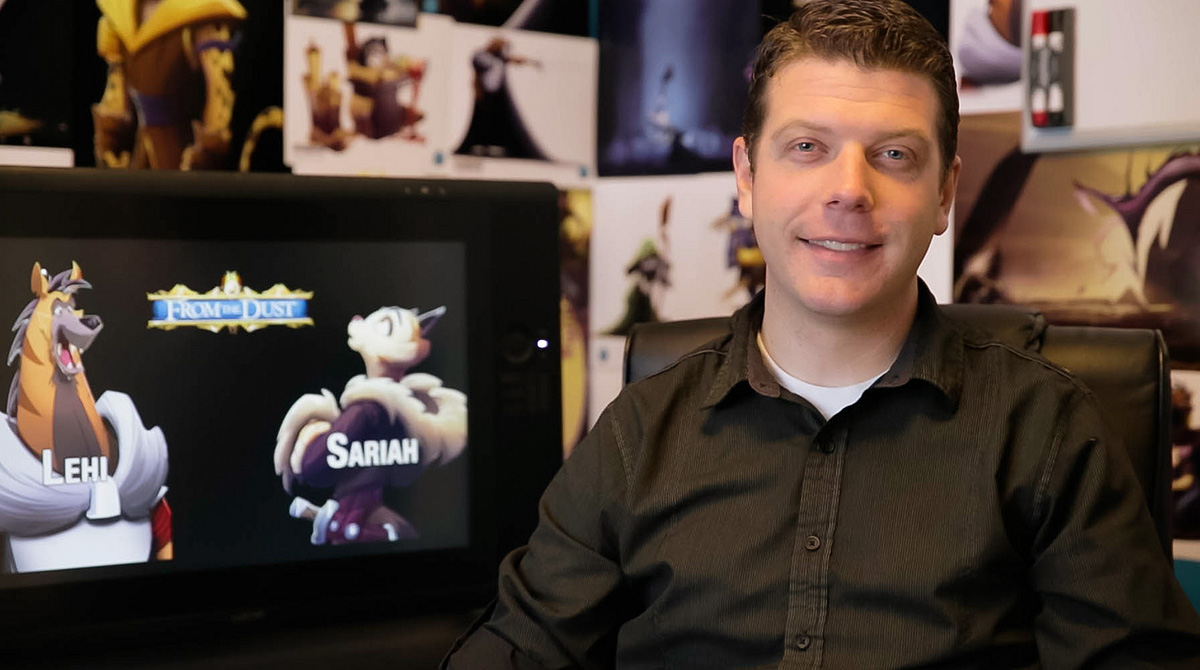
How did you get into art, writing, and design?
My interest in art and writing started early. My older brother, Aaron, enjoyed role-playing games and purchased a number of game manuals that had beautiful fantasy illustrations. I remember spending a lot of time looking at the art in those books.
Aaron was heavily invested in creating the stories and worlds of his role-playing games and often looked for inspiration in popular fiction. He got me reading Tolkien in about sixth grade, as well as many other authors. I loved the epic scope and masterful execution of Tolkien. Many people don’t realize that Tolkien was an accomplished watercolorist and illustrated several versions of his books. Talk about an inspiring writer/illustrator combo! I think I have mostly my older brother Aaron and J. R. R. Tolkien to thank for getting me started, because I’ve been writing and drawing my own stories ever since they introduced me to the world of fantasy.
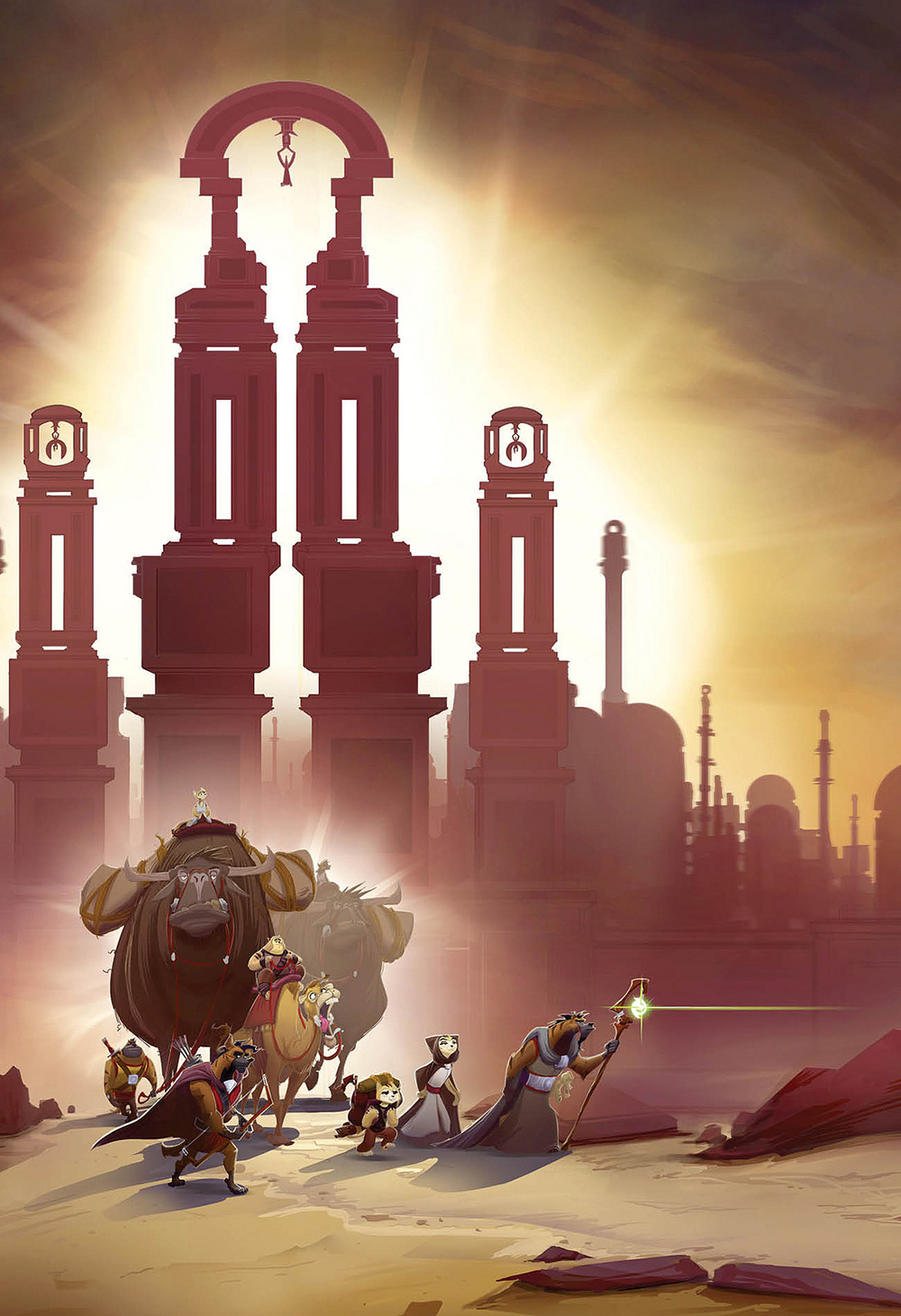
What other illustrators have influenced you as an artist?
I would divide this question into two basic tiers. The first would be everyone who influenced me during my animation degree at Brigham Young University, and the second would be my childhood influences.
I have to put a big shoutout to everyone involved in my education, especially my animation instructors Ryan Woodward, Brent Adams (genius behind BYU Animation), Kelly Loosli (co-genius behind BYU Animation), and Cynthia Hogan (who used to run CalArts’ animation program), and of course my many fellow students. In particular I would highlight Anthony Holden, who now works at Laika as a storyboard artist. His example continues to inspire me. In every case these individuals were art-related influences but all became a kind of spiritual advisor, usually indirectly just by being a good example.
In addition, I was heavily influenced by these guys: Craig Mullins, Glen Keane (Disney animator—the genius behind Ariel, Beast, Aladdin, Tarzan, Tangled, you name it!), Richard Schmid (author of Alla Prima, a book on fine art painting), Walt Stanchfield (Disney animator and instructor—two books on gesture drawing), Joe Weatherly (animal artist—book on the same), David Colman (an animal designer in the animation industry), Rad Sechrist, Creature Box (designers of Ratchet & Clank video games), Marcelo Vignali and Armand Serrano (designers at Sony Animation), and a huge number of Avalanche Software blogger/artists from about seven years ago, before Disney Interactive bought them out (these are the same brilliant minds that are now bringing you Disney Infinity). I have been in love with all of these artists for years and would die for a chance to have lunch with any one of them!
Prior to my education, my experience with art was basically limited to game books, art books, and the local Portrait Society of Atlanta. If anyone wants to see a thorough history how I developed from a young child artist, you can follow this link.
How did your From the Dust project get started?
From the Dust started from doodles drawn during institute. The material was interesting but the instructor was boring. I thought to myself, “You know what would spice this class up a bit? This!” I started drawing prophets as animal characters and the rest is history. This coming February, From the Dust celebrates three years since those first sketches. It took about a year of development before I started generating actual products for people to purchase and provide feedback on. The first official issue, From the Dust #1, was published in February 2013.
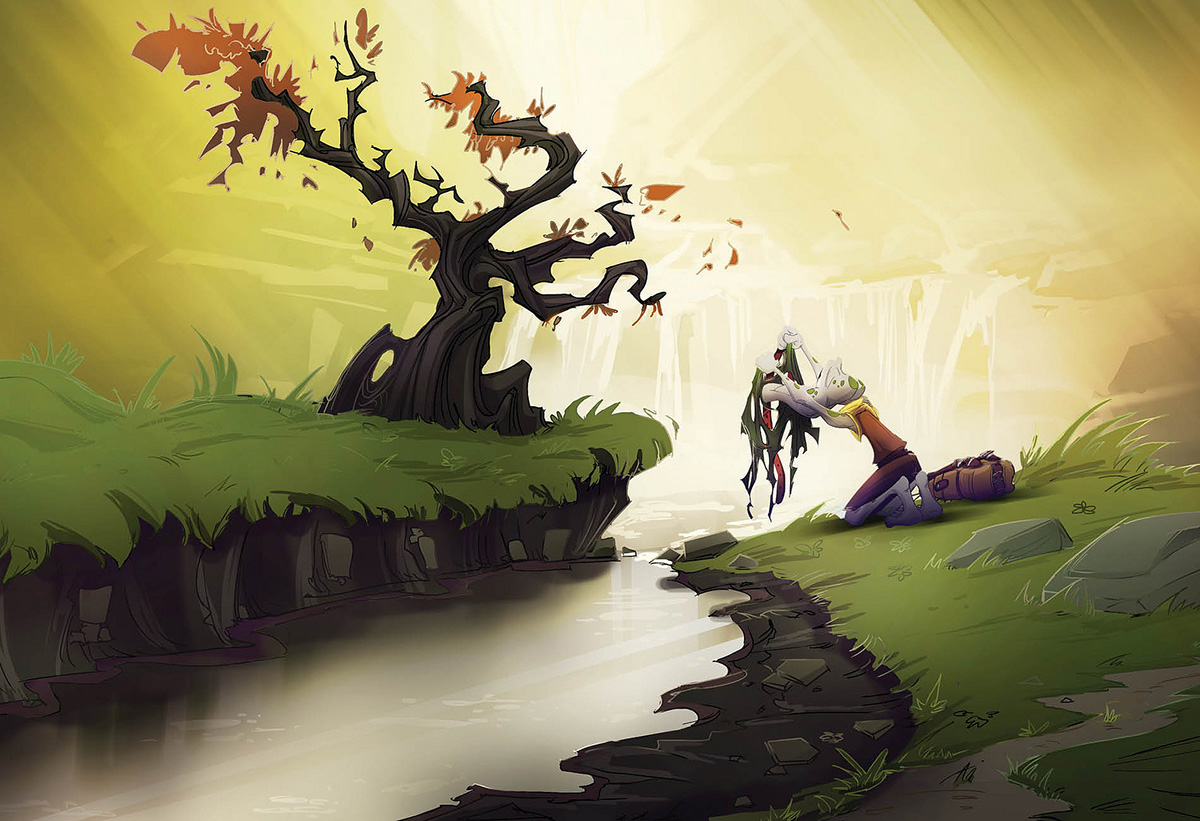
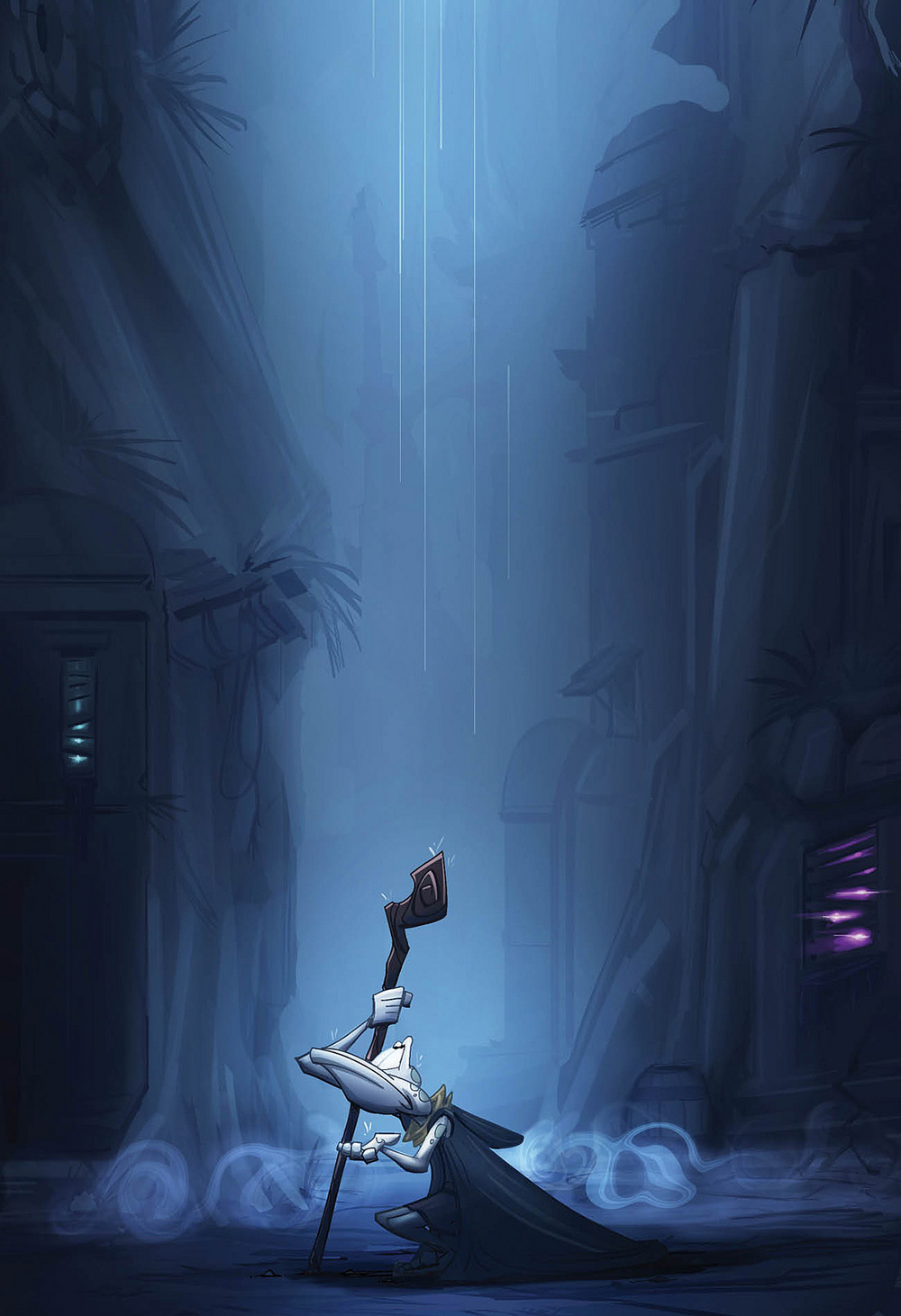
Tell us more about your process on From the Dust—researching source material, organizing it into the story, writing and art, etc.
It started with a simple idea: tell Lehi’s story in the Book of Mormon, but do it in comic book form with animals so that children can enjoy it.
However, the dream quickly grew far beyond that simple idea into something that is much larger than I ever anticipated. It now has become a truly epic project that I alone can never accomplish on my own. This shift came about in the research phase, so I’ll just share what I discovered in my research.
I learned that Lehi’s story was intrinsically linked with the biggest story of the Bible—the destruction of Jerusalem in 587 B. C. (also known as the Jewish diaspora). This story composes almost 60% of the content of the Bible and virtually all of the stuff that is not read on a regular basis, like Jeremiah, Kings, Chronicles, Ezekiel, and more. The story has never to my knowledge been given screen time in movies, either by religious groups or by Hollywood (although small disconnected excerpts have been told). The destruction of Jerusalem is truly the world’s biggest untold story—and I was flabbergasted when I discovered it staring me in the face as the root of the Book of Mormon story. How is it possible that the Bible’s largest continuous narrative has never been visualized? And how can it be so huge and so connected to Lehi’s story and yet I know so little about it? And I was not alone. Virtually no one I knew could tell me anything about it, either.
The story is a fascinating story of betrayal, war, siege, and hope amidst the deepest adversity. It is the time when more living revelation flowed from the pens of prophets than any other time in history. I was mesmerized the more I learned about it. I read the Book of Jeremiah, which is the heart of this story, at least a dozen times. It became more and more apparent to me that somebody needed to tell this story. I looked everywhere but simply couldn’t find it—not told in a way that a family could enjoy it.
So I dedicated myself—and as it has turned out, probably most of my life—to the task since it appeared that no one else was doing it.
If I was going to tell the “biggest story never told,” I wanted to do it in such a way that it would be valuable and relevant to as many people as possible for as long as possible. This is where my background in studying Disney and Pixar came in. They specialize in some of the world’s most fascinating media: family media. What other media can grandparents, parents, teenagers, pre-teens, and children all enjoy together? Almost nothing. Family media is unique in the entertainment world and it’s very hard to get it right, and in the case of animation usually expensive as well. But when it’s done right, it is not only powerful, but it is also trans-generational. People still watch (and love) Sleeping Beauty fifty years after its release—which is amazing!
Ironically, despite Latter-day Saints’ emphasis on happy families, very little of the media found at Deseret Book and in the LDS industry is truly family media. In my research I found nothing—nothing—that competed with Disney or Pixar, and no companies that appeared to be tackling such a product anytime in the near future.
So I’ve spent the last two years creating hundreds of pages of script and thousands of drawings, and learning a lot of different skills so that I can build a foundation for this family media product, which as you know, is a series called From the Dust. Unlike virtually every other Bible product I’ve ever seen, which segments scriptural stories into easy-to-tell (and easy-to-sell) stories, From the Dust reconstructs the stories as they really happened, which means it’s one continuous narrative. The reason for this is simple: education. Segmenting those stories perpetuates the false concepts that there is no continuous narrative in the Bible and that the Book of Mormon is a separate narrative completely. These ideas are false. From the Dust will not perpetuate them. Rather, it will tell the story like it happened.
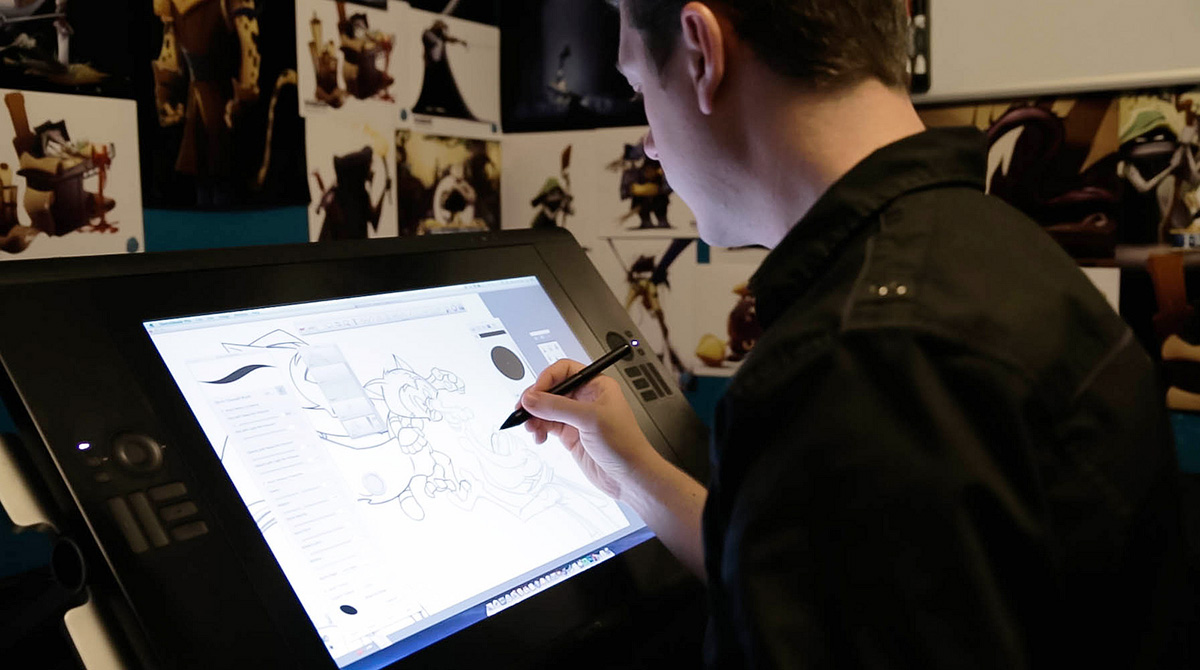
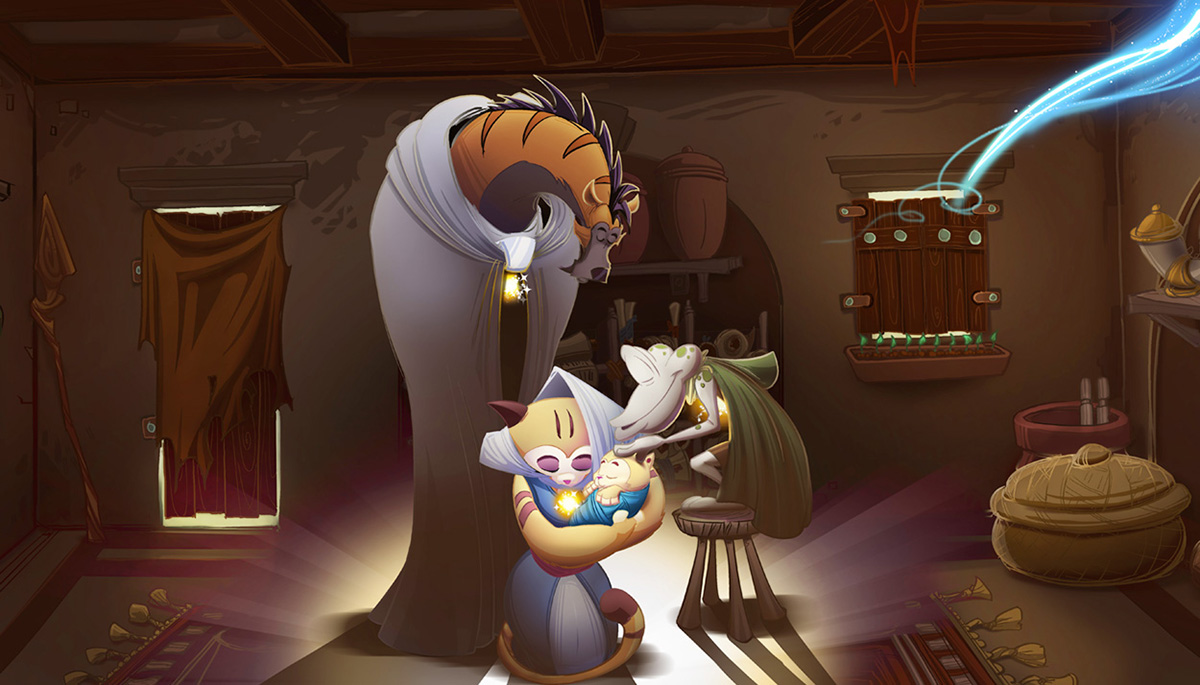
Why the animals?
All of these design elements resulted from careful deliberations. Believe me, I researched the idea of making the characters human and making everything as accurate as possible to scripture. Ultimately, I came to the conclusion that I’m not making a documentary. Documentaries are faithful to all the nitty-gritty detailed facts and have a demographic completely different from what I was looking for. Family media can be enjoyed by anyone. I’m making a Disney film, folks. What would Disney do if he got a hold of the scriptures?
From the Dust is designed visually to not only be entertaining, but also to be extremely effective as an educational resource. Iconic imagery is scientifically proven to enhance memory retention—it’s the same exact reason why the prophets of old used figurative imagery (often comparing their situation to nature, animals, or other familiar elements) to teach their lessons. The lessons then became easier to remember. From the Dust uses iconic imagery that is inspired by the figurative language of the scriptures. It’s fun to read as entertainment, but fascinating to dig deeper into the educational sections and discover what inspired the look and feel of From the Dust.
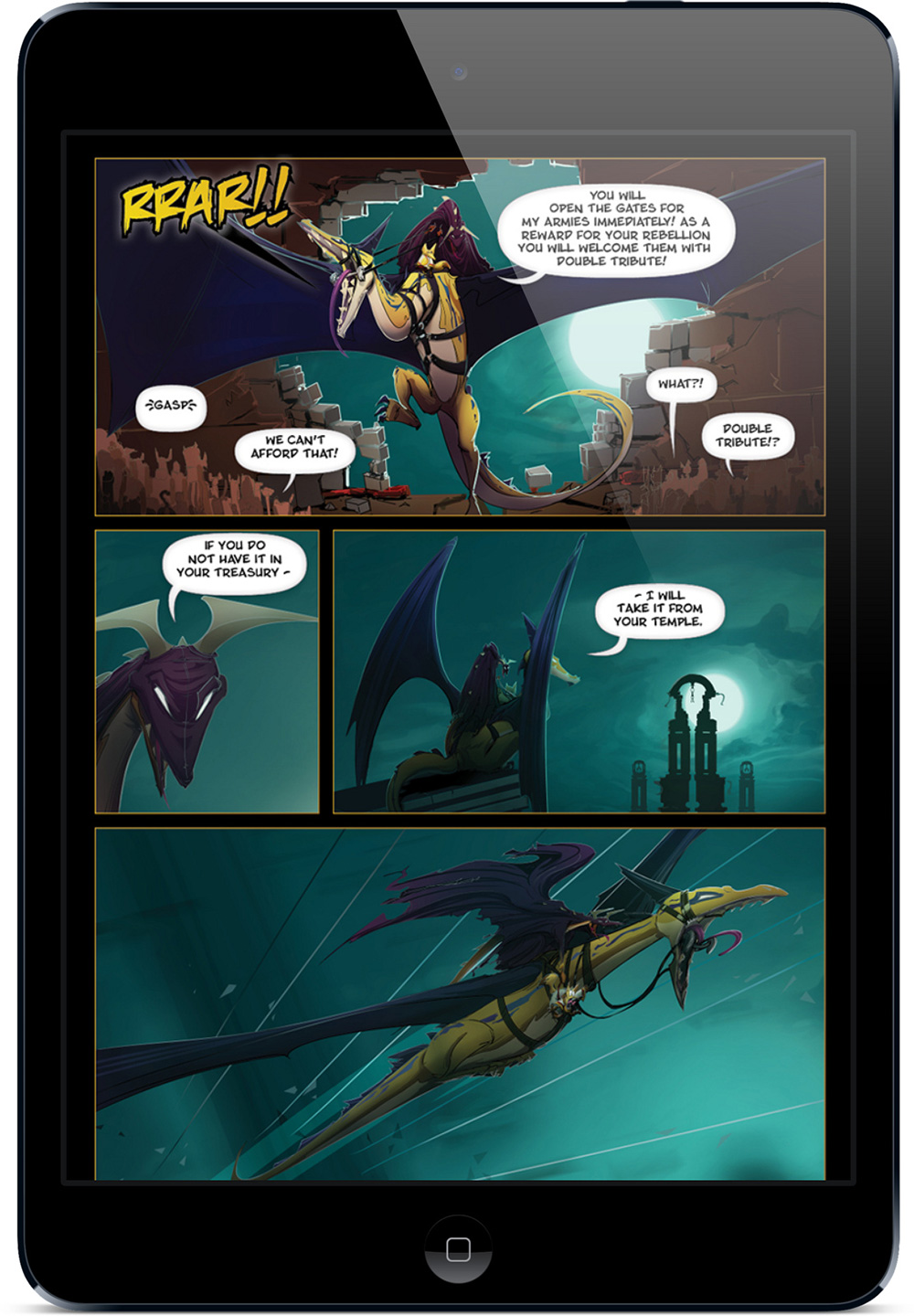
What is your goal for From the Dust?
My goal is to have anyone become extremely well versed in the broad scope of the creation of the Old Testament and the Book of Mormon in a matter of just a few hours of entertainment. Currently, even lifelong churchgoers can struggle to understand the relationship between these books. Often these people are converts to the Church and have not had the opportunity of seminary, institute, lifelong membership, or a mission. The majority of the members of the Church are in this position. Are we going to continue to turn a blind eye to their needs?
Speaking of the needs of Latter-day Saints, less than half of Latter-day Saints speak English, but almost all of the entertainment we create is English-only. I’m not talking about Church products. I’m talking about our entertainment.
One of the miracles of the latter days is the Saints’ marvelous diversity. That diversity, however, makes it difficult to create entertainment that we can all enjoy simultaneously. As strange as it may sound, comics are the answer.
Comics are the most cost-effective family media. Comics are inexpensive to translate. The story is mostly told with pictures. Film, TV, and animation can be extremely expensive to produce and to internationalize because they include sound, acting, and of course movement.
All across the world Latter-day Saints struggle to find quality media for their families. Once translated, From the Dust can immediately be distributed digitally. Then, when the time is right, a local print edition can be made available.
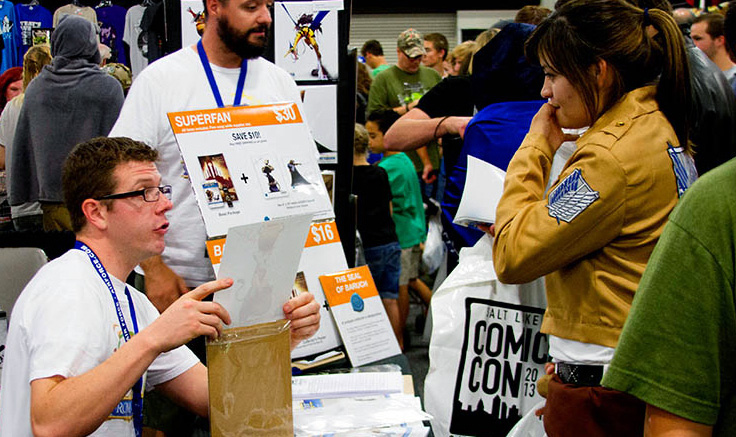
There is a prevailing myth that must be eliminated for From the Dust to succeed in its mission: that a comic book is cheap, trashy, violent, not wholesome, filled with lusty babes, and only little boys destined to become porn addicts read them. If designed properly, a comic can be as heartwarming as any film, as moving as any book, and as powerful as any sermon. It doesn’t need to be violent. It doesn’t have to have lusty babes. That is merely the comic book model that has made Marvel and DC, the two major comic book creators in the U. S., successful. What kind of comic would Latter-day Saints make if Latter-day Saints made comics?
If it was the same quality as a Disney film, do you think a father or a mother would read it with their children? Do you think your teenage son or daughter would pick it up if it looked like Tangled or Frozen? Would they read it with their siblings? Do you feel that grandparents would be happy to have a new $6 book every month to purchase for their grandchildren that was a guaranteed win? Yes, yes, yes, yes, and yes!
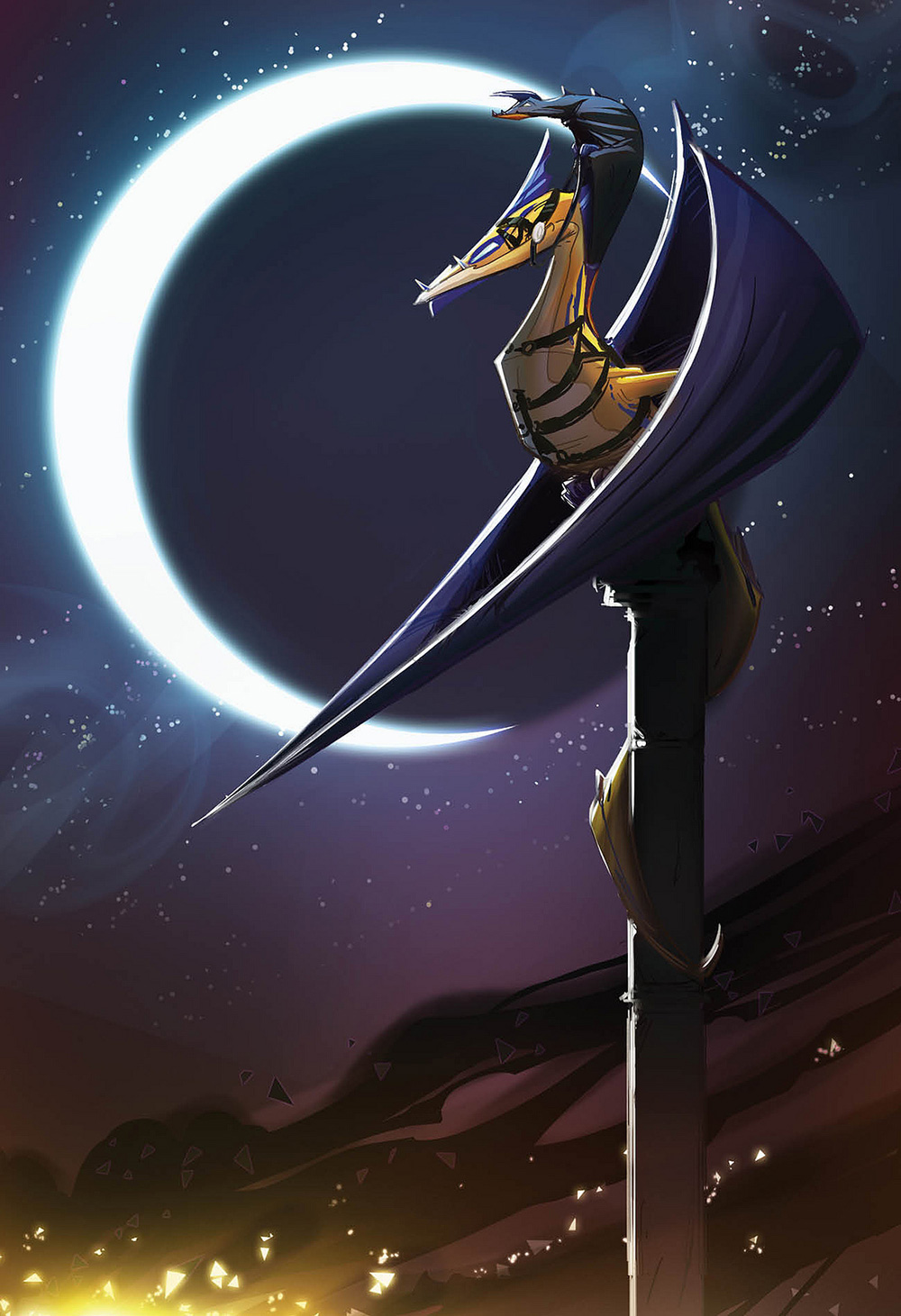
What’s your process for taking the Old Testament and Book of Mormon stories and reconstructing that combined, continuous narrative?
It’s complicated, but I think it can be organized into a few basic rules and processes. The short of it is that I basically treat From the Dust as if it were a TV series or movie series, and I apply the same principles. First comes research and writing, then visual development, then production, and lastly post-production and marketing.
The first part of the process has been the large task of reconstructing the Old Testament chronologically. That really should be like a master’s thesis by itself, especially the Book of Jeremiah, which is the least chronological book in all of scripture (but also the climax of this story). Why is Jeremiah not in order? No one knows. It’s as if someone took a stack of paper, threw it up in the air, and then picked it up and stuck it in the Bible. Of course that doesn’t make sense if you consider the prevailing theory that scriptures were written on scrolls, unless that scroll had been torn up or damaged, or was in fact not a scroll at all but looseleaf papers in the process of being aggregated into a scroll or other collection (like … the brass plates?). So many facts suggest that the Old Testament was being compiled during Jeremiah’s time, just like the Book of Mormon was compiled during Mormon’s time.
The process after reconstructing the narrative chronologically is then deconstructing it again into smaller stories. David and Goliath would be a good example of a smaller story. I then have to figure out how to reorganize those smaller stories into different narratives that flow well and have related material in them, while doing my best to maintain accuracy to the flow and chronology of the biblical text. An example of two narratives that are not linked in scriptures but flow well together are Lehi’s vision of the destruction of Jerusalem (2 Nephi 1:4, and Jeremiah’s account of the same (Jeremiah chapters 39 and 52). From the Dust will tell those events in a dream format—we follow Jeremiah in his experience while Jerusalem is being destroyed and suddenly we cut in the next comic to Lehi waking up from a nightmare—as if everything we just saw was in fact Lehi’s dream. On his deathbed, Lehi states, “I know that Jerusalem is destroyed.”
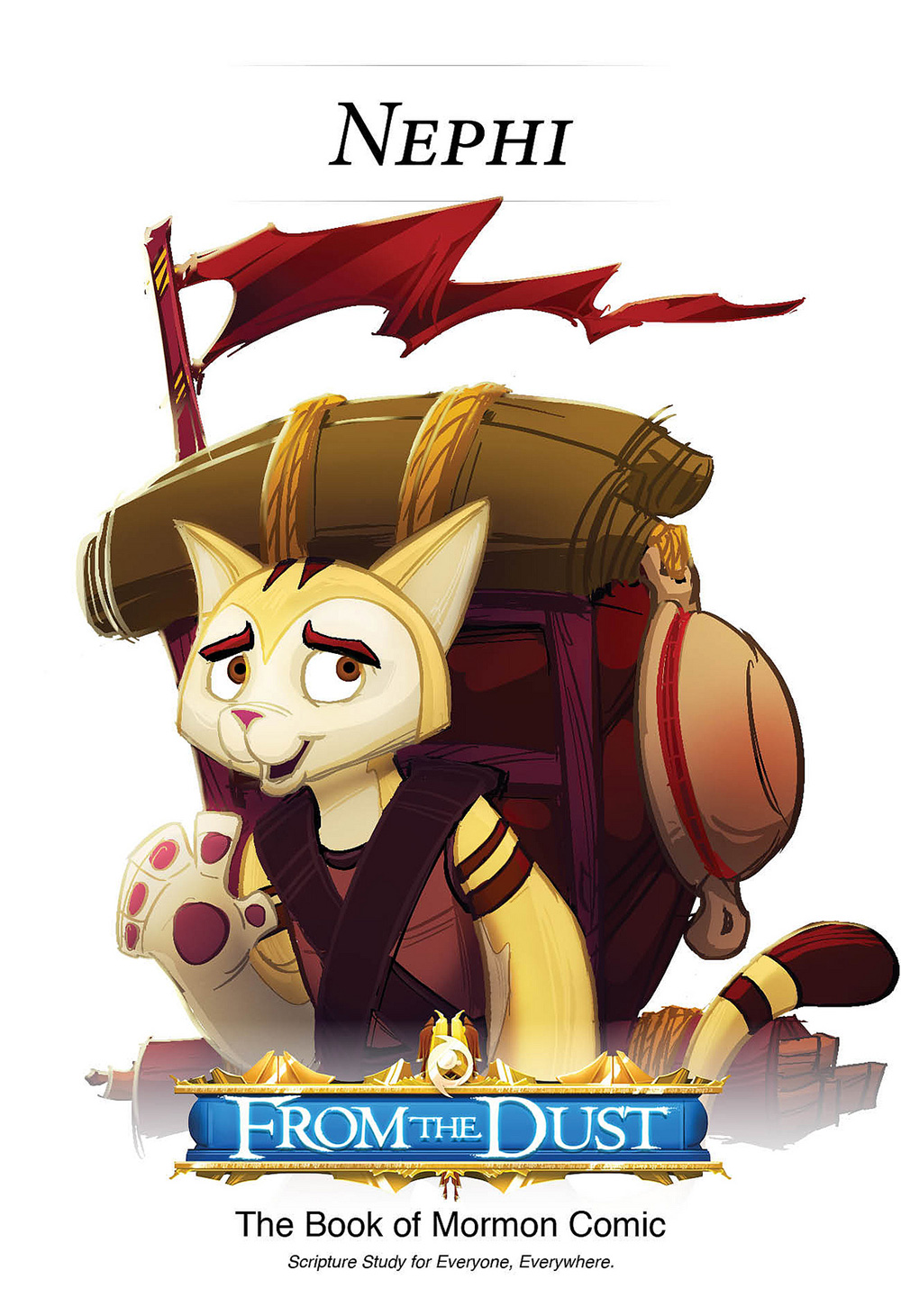
We will constantly be cutting back and forth between Jeremiah’s story, Lehi’s story, Nephi’s story, Ezekiel’s story, and Daniel’s story, as they were all happening simultaneously. These larger stories are organized into seasons that have a self-contained story arc, just like a season of a TV series. Seasons are then broken down into comics and the comics consist of the smallest segment of story—the actual scenes and panels you read. Everything has to flow, has to be Hollywood quality, and has to keep readers wanting more—which isn’t hard, because when told in this way the stories suddenly go from being “boring Old Testament stories” to some of the most fascinating and educational stories out there—better than Star Wars, Harry Potter, or the Hunger Games, because these stories actually happened and actually affected the course of history forever.
It’s basically an organizational nightmare, though. The script currently consists of almost 2,000 individual pieces right now. Let’s not talk about it. It makes me shiver.
And that’s just the writing of From the Dust. I then have to take the script, design all the visual elements in each and every scene, and design the world of Jerusalem and the world that surrounds Jerusalem. In movies this is the visual development stage when the artists are making “concept art.” Usually a team of ten to thirty people will work two years on this for an animated feature.
The plan is to have Jerusalem detailed enough and accurate enough so that when Jeremiah mentions things like the middle gate, the high gate of Benjamin, the college, Jonathan’s house, etc., we as readers understand what he’s talking about because we’ve spent so much time in Jerusalem in the series. That way when we read about those places in the scriptures, bam—it’s like saying “California” or “Washington.” We know where those are. This also includes all the surrounding nations of Judah, too, including Ammon, Edom, Moab, Lebanon, the Philistines, and others.
Again, like the script, all these elements have to be visually distinguished one from another (an Egyptian should look different from a Babylonian, but not like an Arabian) while simultaneously staying true to the general look and feel of From the Dust. Like the writing, this part of the project is simply huge. What sets great movies apart from the so-so ones is spending enough time on the writing and visual design to ensure an amazing experience for viewers.
If you look at the number of cultures in the scriptures and compare it with, say, the Lord of the Rings movies, which required a similar design methodology to bring that world to life, From the Dust has fully two to three times as much design work involved. It’s ridiculous.
Again, I just don’t think about it, or else I wouldn’t be able to sleep at night. From the Dust is bigger than one person and I’ve known that for a long time. But I can’t stop, or else who will tell this story? Do you want to wait another five or ten years for someone to get around to that? Me either!
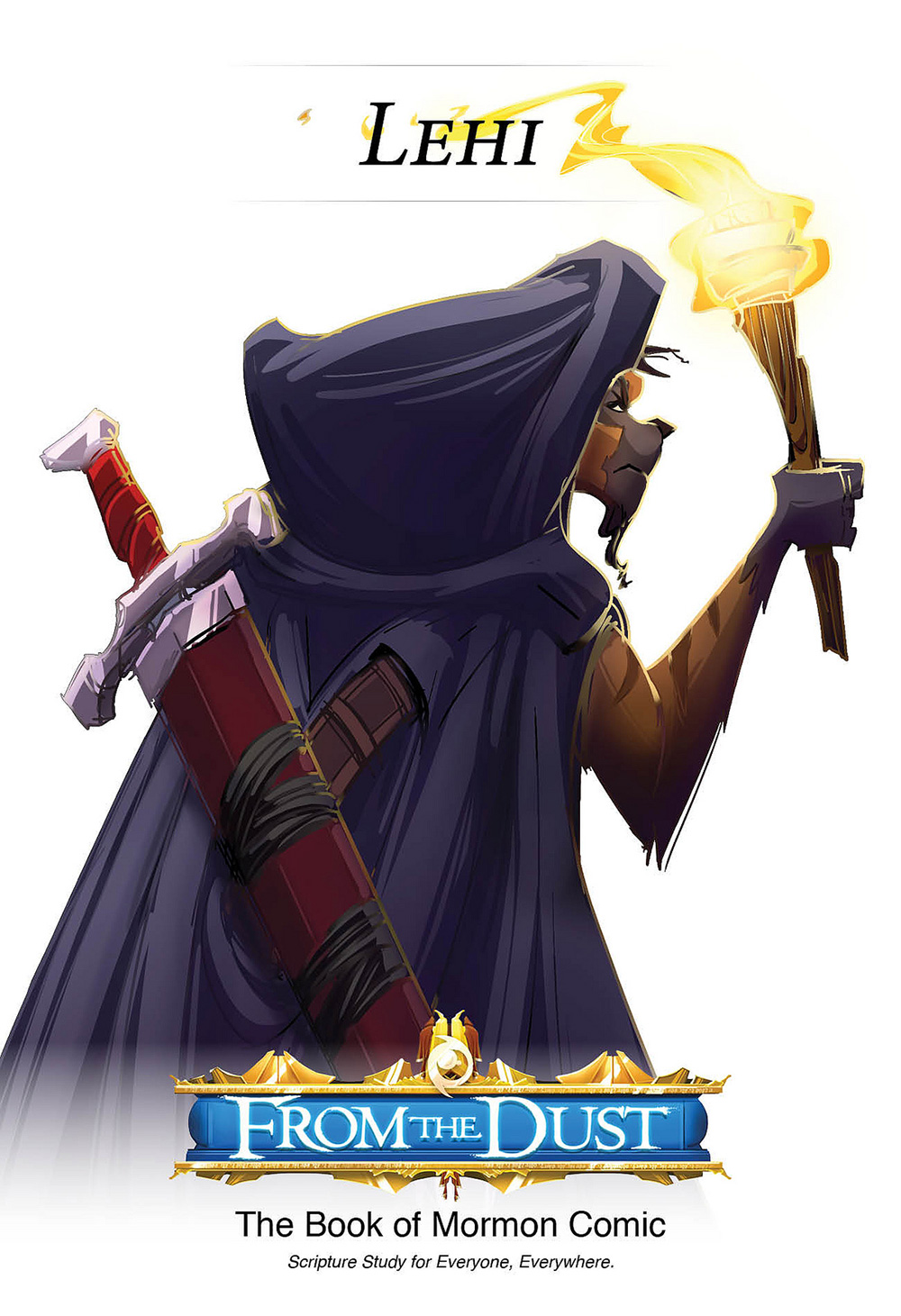
After the visual design work, it’s time to make the actual story! I follow all the same basic processes of a 2D Disney film, except I add in lighting and effects like a 3D animation or video game. First I draw the storyboards, then pencil the illustrations, ink them, paint them, and light them and add special effects. Each panel follows this process. Any additional artwork required for the educational material in each comic is then added and the comic book is ready to be sold!
At 125 illustrations per comic multiplied by about fifty comics in the series (and maybe more), we are looking at over 6,000 illustrations. My goal is to provide the highest possible value for the lowest possible cost. At just $5.99 per issue, From the Dust is a steal. When was the last time you purchased a children’s book with 125 illustrations in it? Did it cost you just $5.99? Was it educational? Was it something that you could enjoy right along with your children? From the Dust is all of those things!
So here is a conundrum. As part of my secret recipe of providing you stellar value, I decided to self-publish. What this means is that things are starting slow because I don’t have the money, manpower, or leverage of Deseret Book or Seagull Book to advertise and distribute. Advertising is basically 100% word-of-mouth, and every moment I spend talking is a moment I’m not creating the next comic. Currently I have about five hundred readers, but From the Dust needs over 5,000 consistent readers before it reaches “critical mass” (that means I can quit my other jobs that pay my bills and work on From the Dust full-time). You may think that five thousand readers is no big deal, but in the LDS publishing world it means that From the Dust has to have each and every issue become one of the best-selling LDS products of all time.
I am confident that this can be achieved. All I ask is that you give the series a chance. Invest in the first couple of issues, read them (yes, I’m asking you to read comics!), test it on your children, on your teenagers, on your parents. Compare it with the scriptures. Ponder on the things that you learn. See if it does what I claim it can do. And please be understanding if things are slow—it’s a lot of work and I truly am doing the very best that I can.
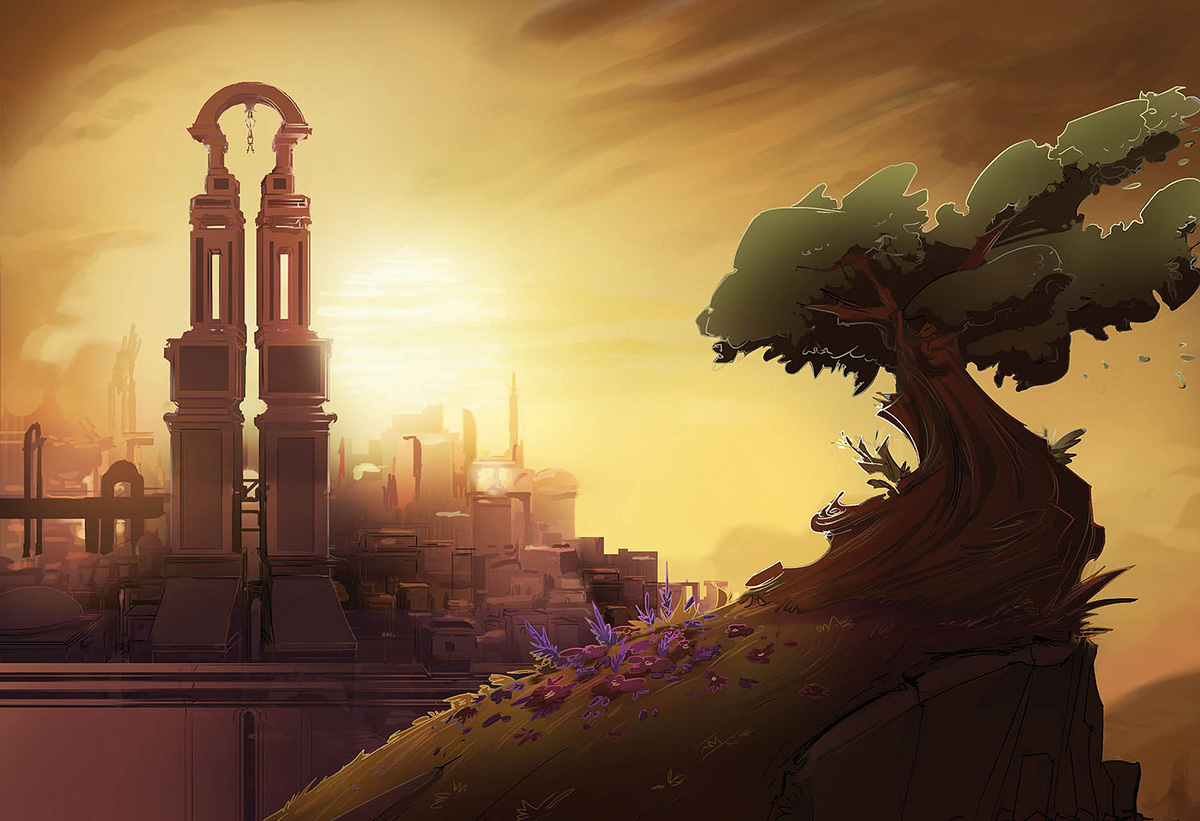
Other than the obvious subject matter, how does the gospel influence your work?
It permeates everything, and I hope people feel and see that in all my work. I am well aware that because of From the Dust’s scriptural origins, it will influence people’s relationships with the scriptures and even with Heavenly Father. I am working very hard to ensure that From the Dust will bring people closer to those things. If it doesn’t, or if I make a mistake that offends someone (I am human, after all), I would hope my readers would kindly let me know and give me a chance to fix things. I firmly believe that Heavenly Father likes cartoons as much as he likes film, and if we ask, he’ll show us how to make cartoons that he approves of.
How do you go about trying to make From the Dust help bring people closer to the scriptures and to Heavenly Father?
From the Dust is, at its core, just entertainment. It’s educational, too, but it’s certainly no replacement for scriptures, and it doesn’t try to be. The use of animals makes this fact clear to even the youngest audiences. From the Dust is designed to 1) inspire readers to read the real scriptures and 2) empower them with knowledge to make their “real scripture” readings more effective—especially in family settings. Wouldn’t it be amazing if each day for family scripture study everyone in the family was just darn excited to be there? ❧
